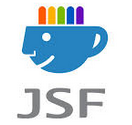Groovy is another popular programming language for the Java Virtual Machine. Groovy is dynamically typed, and groovy code can be more concise than the equivalent Java because you can omit types of variables and parameters. Almost any Java code is legal groovy, that’s make it simple and easier for getting started using it. Ultimately, using the Groovy …
Groovy
Setup Groovy enVironment Manager (GVM)
Groovy enVironment Manager (GVM) is a tool used for managing the multiple version of the software development kits in the Unix based systems. In the current version, it supports the groovy related development kits. Groovy software kits can be installed and configured using this tool. There is no setup available for the windows based systems. …
CRUD Operations in Gaelyk- Part 2- Read Operation
In our previous post we saw about implementing Create operation for creating a new entity and persisting to the database. In this article lets see how we can retrieve all the entities stored in the datastore. This would be the Read operation from the CRUD operations in Gaelyk also read: Groovy Tutorials Creating JSON using …
Developing Groovy based web application and deploying to Google App Engine
We have seen how to develop a ZK based application and deploy it to OpenShift. Google has also a Paas offering called Google App Engine(GAE) which supports Java, Python and Dart applications. Gaelyk is a simple Groovy based toolkit to develop and deploy application to GAE. In this article lets build a simple Gaelyk based …
Exiting Blocks and Methods in Groovy
This article is based on Groovy in Action, Second Edition, to be published on Summer 2011. It is being reproduced here by permission from Manning Publications. Manning publishes MEAP (Manning Early Access Program,) eBooks and pBooks. MEAPs are sold exclusively through Manning.com. All pBook purchases include free PDF, mobi and epub. When mobile formats become …
Objects in Groovy
This article is based on Groovy in Action, Second Edition, to be published on Summer 2011. It is being reproduced here by permission from Manning Publications. Manning publishes MEAP (Manning Early Access Program,) eBooks and pBooks. MEAPs are sold exclusively through Manning.com. All pBook purchases include free PDF, mobi and epub. When mobile formats become …
Templates in Groovy
1) Introduction In this article, we will expose the various APIs for processing Templates in Groovy. A template can be thought of some static content along with some well-defined place-holders. These templates can be re-used any number of times by simply copying it and substituting the place-holders with some appropriate values. The first section of …
Closures in Groovy
1) Introduction to Groovy Closure In this article, let us look into one of the important features supported in Groovy, the Closures. Groovy is an object-oriented scripting language in which the syntax resembles Java. Not all languages support the concept of Closures directly, although they may provide indirect support, that too with so many limitations and …



